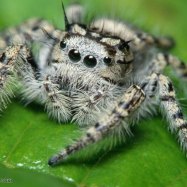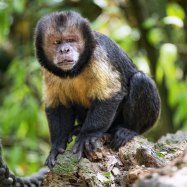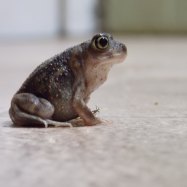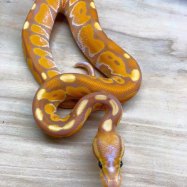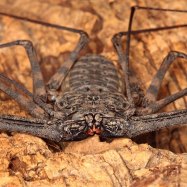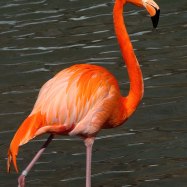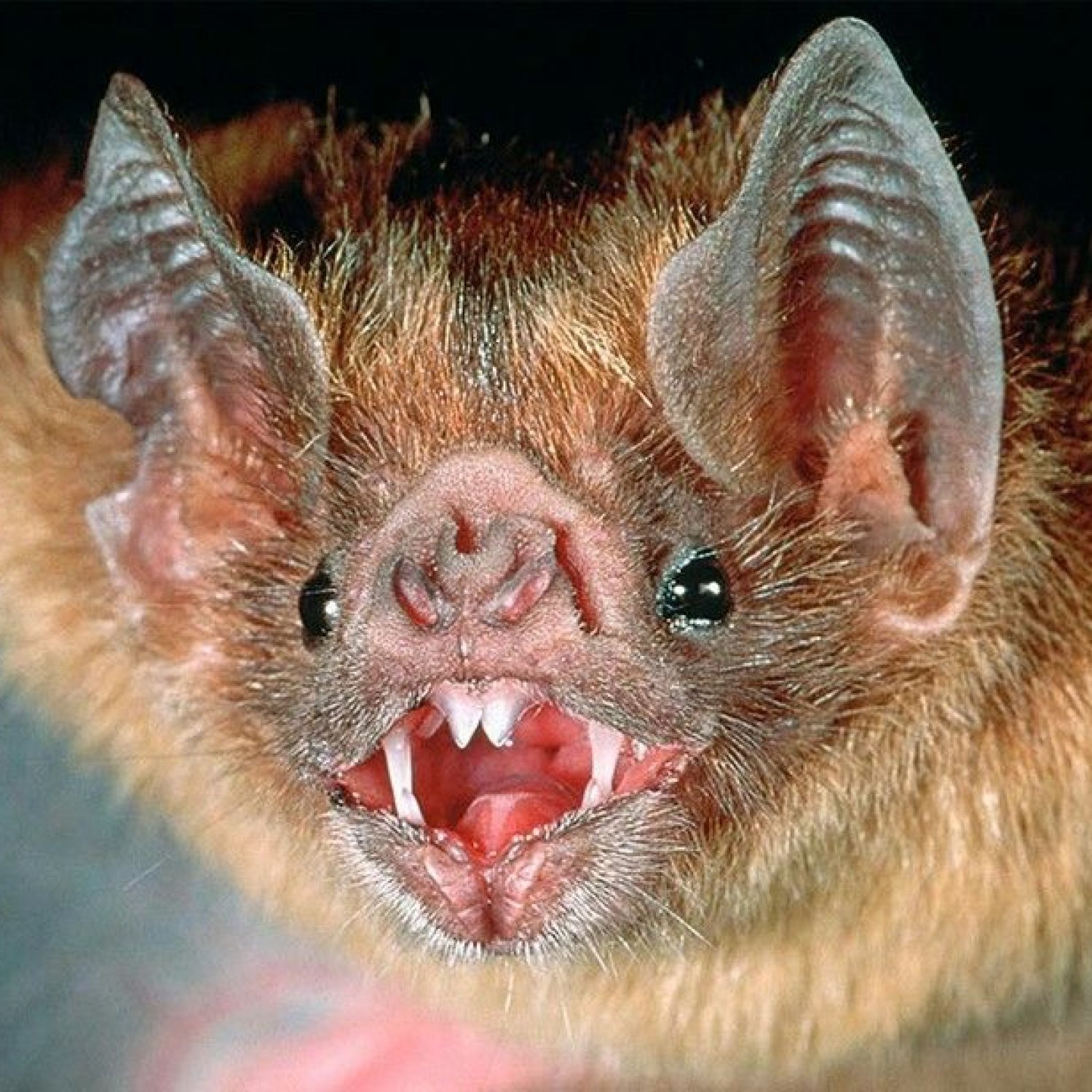
Vampire Bat
7-9 cm (2.8-3.5 inches)
The Vampire Bat, found in caves, trees, and buildings, is a small and slender creature measuring 7-9 cm long. Belonging to the Phyllostomidae family, these bats have unique feeding habits as they rely solely on blood for survival. Despite their intimidating name, they play an important role in the ecosystem by controlling insect populations. Learn more about these fascinating creatures! #VampireBat #Phyllostomidae #insectcontrol #ecosystem
Animal Details Summary:
Common Name: Vampire Bat
Kingdom: Animalia
Habitat: Tropical and subtropical regions
The Mysterious and Misunderstood Vampire Bat
Having the word "vampire" in its name, the vampire bat is often associated with fear, horror, and blood-sucking. However, this small mammal is far from being a terrifying creature, and its behavior and adaptations are fascinating to study. In this article, we will take a closer look at the vampire bat, its scientific name Desmodus rotundus, and its remarkable features.The Blood-Loving Mammal
The vampire bat is a member of the Animalia kingdom, Chordata phylum, and Mammalia class Vampire Bat. It belongs to the Order Chiroptera, which includes all species of bats, and the family Phyllostomidae, which is known as the "leaf-nosed bats." The vampire bat, also known as Desmodontinae, is divided into three species: the common vampire bat, the hairy-legged vampire bat, and the white-winged vampire bat.The vampire bat is native to Central and South America, making its home in countries such as Mexico, Brazil, Argentina, and Chile. These bats are highly adaptable and can be found in various habitats, but their preferred living spaces are in tropical and subtropical regions. They are often found in caves, hollow trees, and abandoned buildings, where they can roost safely during the day. Vampire bats typically roost in large numbers, sometimes reaching up to hundreds or thousands in a single colony.
A Not-So-Scary Feeding Method
The most distinctive feature of vampire bats is their feeding method - hematophagy, which means they feed on blood. They are the only species of mammal that survives purely on blood, making them unique among all other mammals. However, contrary to popular belief, vampire bats do not suck blood Vaquita. Instead, they make small incisions with their razor-sharp front teeth and lap up the blood that flows out.The vampire bats' preferred food source is the blood of warm-blooded animals, such as livestock, birds, and even humans. These bats can detect heat signatures, allowing them to locate a suitable prey effortlessly. Once they have found a suitable host, they will make a small incision using their teeth and their saliva, which contains an enzyme that prevents the host's blood from clotting. Vampire bats have also developed an impressive ability to taste and smell their prey's blood, ensuring they get the perfect meal.
Survival Adaptations
The vampire bat's feeding method has evolved over millions of years and is a crucial survival adaptation for these animals. By feeding exclusively on blood, they have minimized competition for food among other bat species. This unique diet has also made vampire bats highly efficient at extracting the necessary nutrients from blood, which lacks many essential nutrients required for survival. Vampire bats have elongated snouts with sharp teeth that allow them to pierce the skin of their prey without causing pain or injury.Additionally, vampire bats have a special mechanism for storing excess blood, so they never have to overfeed. They have a highly expandable stomach that allows them to store up to two times their body weight in blood. This adaptation ensures that they have a steady supply of blood, even during lean times when prey is scarce.
A Colorful World of the Bat
The vampire bat's coloration is not as dark and menacing as its name suggests. Although most people imagine them to be black or dark brown, vampire bats actually come in various colors. Common vampire bats have dark brown to reddish-brown fur, while the hairy-legged vampire bat has golden to reddish fur with white-tipped hairs on its feet and legs. The white-winged vampire bat, as the name implies, has white fur on its wings giving it a distinctive appearance.These coloration adaptations have allowed the vampire bat to blend seamlessly into its surroundings, making it less visible to potential predators. Additionally, vampire bats have a keen sense of hearing, which helps them navigate in the dark when they are flying or hunting for prey.
A Small but Mighty Creature
Despite their small size, vampire bats have developed several survival adaptations that make them formidable creatures. These bats have a body length of 7-9 cm (2.8-3.5 inches) and weigh around 30-70 grams. They have small, slender bodies, which makes them quick and agile. This small size also allows them to move easily and crawl within narrow spaces while roosting in large colonies.Apart from their physical features, vampire bats also have a strong social bond within their colonies. They have a sophisticated communication system that involves touch, scent, and vocalizations, which helps them maintain strong relationships with other colony members. These bonds are essential for their survival as they depend on each other for food and protection.
The Unfair Reputation of the Vampire Bat
Despite being a vital part of the ecosystem, vampire bats have long been misunderstood and feared due to their name and association with vampires. But the truth is, vampire bats do not pose a significant threat to humans. They are highly unlikely to attack humans, and even when they do, they rarely drink enough blood to cause harm.In fact, vampire bats' role as a disease vector is more accurately reported, as they can transmit diseases such as rabies to other animals. However, vampire bats themselves are not carriers of the disease but can become infected when they feed on infected animals.
A Future Threatened by Human Actions
While vampire bats have developed remarkable adaptations for survival, their future is uncertain due to human activities. Habitat destruction, disturbance, and hunting have significantly impacted vampire bat populations. This is particularly concerning as these bats are important pollinators and help maintain the balance of ecosystems.Furthermore, the widespread use of pesticides has led to a decline in prey populations, making it difficult for vampire bats to find food. Education and conservation efforts are essential in protecting these animals and ensuring their survival.
In Conclusion
The vampire bat may have a fearsome reputation, but these misunderstood creatures have intricate and fascinating behaviors and adaptations. They play a crucial role in maintaining the balance of ecosystems and have much to teach us about survival and cooperation. By understanding and appreciating these unique mammals, we can work towards preserving their future and the delicate ecosystems they inhabit.

Vampire Bat
Animal Details Vampire Bat - Scientific Name: Desmodus rotundus
- Category: Animals V
- Scientific Name: Desmodus rotundus
- Common Name: Vampire Bat
- Kingdom: Animalia
- Phylum: Chordata
- Class: Mammalia
- Order: Chiroptera
- Family: Phyllostomidae
- Habitat: Tropical and subtropical regions
- Feeding Method: Hematophagy (feeds on blood)
- Geographical Distribution: Central and South America
- Country of Origin: Multiple countries in Central and South America
- Location: Caves, hollow trees, and abandoned buildings
- Animal Coloration: Dark brown or black
- Body Shape: Small and slender
- Length: 7-9 cm (2.8-3.5 inches)

Vampire Bat
- Adult Size: Adults weigh around 25-35 grams (0.9-1.2 ounces)
- Average Lifespan: Up to 9 years
- Reproduction: Give birth to one pup at a time
- Reproductive Behavior: Mating occurs in large groups known as colonies
- Sound or Call: Use echolocation to navigate and find prey
- Migration Pattern: Some populations exhibit seasonal migration
- Social Groups: Live in colonies of up to several hundred individuals
- Behavior: Nocturnal and highly social
- Threats: Habitat loss, persecution, and disease
- Conservation Status: Least Concern
- Impact on Ecosystem: Play a role in controlling populations of livestock parasites
- Human Use: None
- Distinctive Features: Large ears and elongated snout
- Interesting Facts: Vampire bats have the ability to detect infrared radiation, allowing them to locate blood vessels beneath the skin of their prey
- Predator: Some larger birds, such as owls and hawks
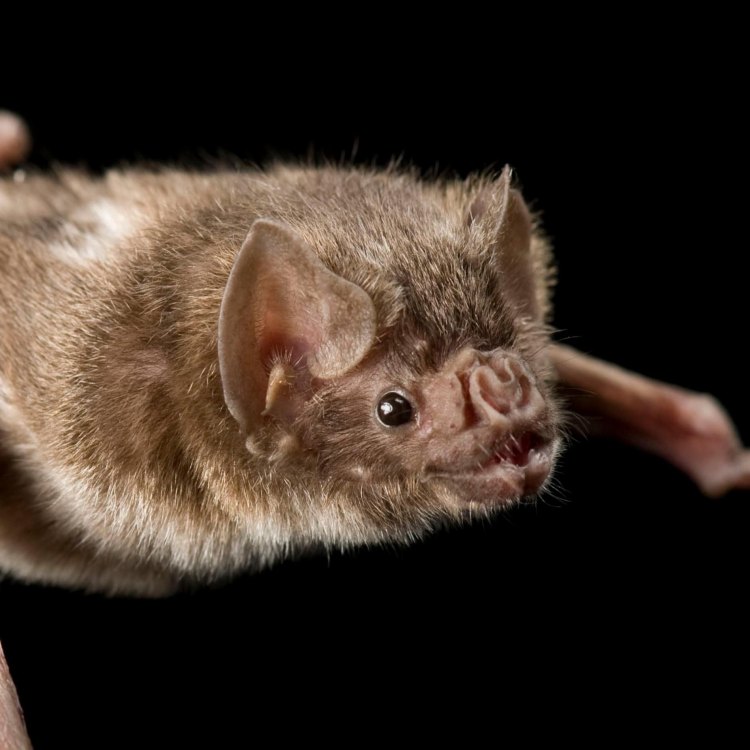
Desmodus rotundus
The Fascinating World of the Vampire Bat - A Mysterious and Misunderstood Creature
The mention of the word 'vampire' often evokes images of blood-sucking, undead creatures of the night that are portrayed in popular culture. However, in the real world, there are actual vampire bats - fascinating creatures that have been a source of curiosity and fear for centuries. These misunderstood creatures have unique features and behaviors that make them stand out in the animal kingdom. In this article, we will delve into the mysterious world of vampire bats and explore their distinctive features, behaviors, and impact on the ecosystem PeaceOfAnimals.Com.The vampire bat, scientifically known as Desmodus rotundus, is a species of bat that is native to Mexico, Central, and South America. They are the only mammals in the world that solely feed on blood, making them one of the most unique and specialized animals on the planet. Vampire bats are small in size, with adults weighing around 25-35 grams (0.9-1.2 ounces). They have a wingspan of about three feet and stand out for their large ears and elongated snout, making them easily distinguishable from other bat species.
These bats are nocturnal and highly social, living in colonies of up to several hundred individuals. They have a lifespan of up to nine years, but due to human interference and environmental factors, their average lifespan is significantly lower. Vampire bats are also known for their reproductive behavior, as they give birth to one pup at a time Vampire Squid. But what is most intriguing about these bats is their reproduction process, which involves large groups of mating bats known as colonies.
Like many other bat species, vampire bats use echolocation to navigate and find prey. However, they have a unique ability that sets them apart - the ability to detect infrared radiation. This allows them to locate blood vessels beneath the skin of their prey, making it easier for them to feed. Vampire bats mostly feed on the blood of cattle, horses, and other livestock, but they also occasionally feed on the blood of birds and other mammals.
These bats are widely distributed in their range and can be found in a variety of habitats, including tropical forests, dry washes, and even human-made structures such as barns and abandoned buildings. In the wild, vampire bats can form large communities known as colonies, where they live and thrive in dark, secluded areas. However, some populations exhibit seasonal migration, particularly in response to changes in food availability and weather conditions.
While vampire bats may strike fear in the hearts of many, they are not a significant threat to humans. In fact, they have a vital role to play in their ecosystem. These bats play a crucial role in controlling populations of parasites that affect livestock. In some regions, vampire bats are deliberately introduced to help control the spread of diseases and maintain the health of herds. However, these bats face several threats that put their existence at risk, including habitat loss, persecution, and disease. As a result, their conservation status is listed as Least Concern on the IUCN Red List.
Despite their crucial role in the ecosystem, vampire bats are still highly misunderstood and feared by many. One of the main reasons for this is their portrayal in popular culture as blood-sucking, vicious creatures. However, there is more to these creatures than meets the eye. Vampire bats have evolved unique adaptations and behaviors, making them one of the most fascinating creatures in the animal kingdom.
As mentioned earlier, vampire bats have the ability to detect infrared radiation, which is used to locate blood vessels. This unique ability is made possible by specialized organs, known as pit organs, located on their noses. These organs contain heat-sensitive cells that allow the bats to sense the warmth radiating from blood vessels, making it easier for them to feed. This highly specialized adaptation has only been observed in a few other species, making vampire bats truly remarkable creatures.
Another interesting fact about vampire bats is their social behavior. They live in colonies and have a strong bond with their fellow bats. These social ties are so strong that bats in the same colony have been known to help each other out. For example, if one bat is unable to find food, they will be fed by another bat in the colony. This behavior is known as reciprocal altruism and has been observed in other species as well, but it is particularly prevalent in vampire bats.
Despite their unique adaptations and behaviors, vampire bats still have their predators in the animal kingdom. Larger birds, such as owls and hawks, are known to prey on these bats. However, these bats have developed various defense mechanisms, such as flying in a zig-zag pattern and releasing a strong odor, to protect themselves from these predators.
The human use of vampire bats is minimal, given their specialized diet and role in the ecosystem. However, there have been instances where these bats have been captured and used for scientific research. Researchers have studied their feeding habits and behavior, leading to a better understanding of their role in the ecosystem and possible ways to mitigate potential conflicts between humans and these bats.
In conclusion, vampire bats may have a notorious reputation, but they are mysterious and fascinating creatures. Their distinctive features, behaviors, and impact on the ecosystem make them stand out in the animal kingdom. As with any animal, it is crucial to understand and appreciate their role in their ecosystem, rather than fearing them based on myths and misconceptions. Next time you hear the word 'vampire bat,' remember the fascinating world that lies behind it.
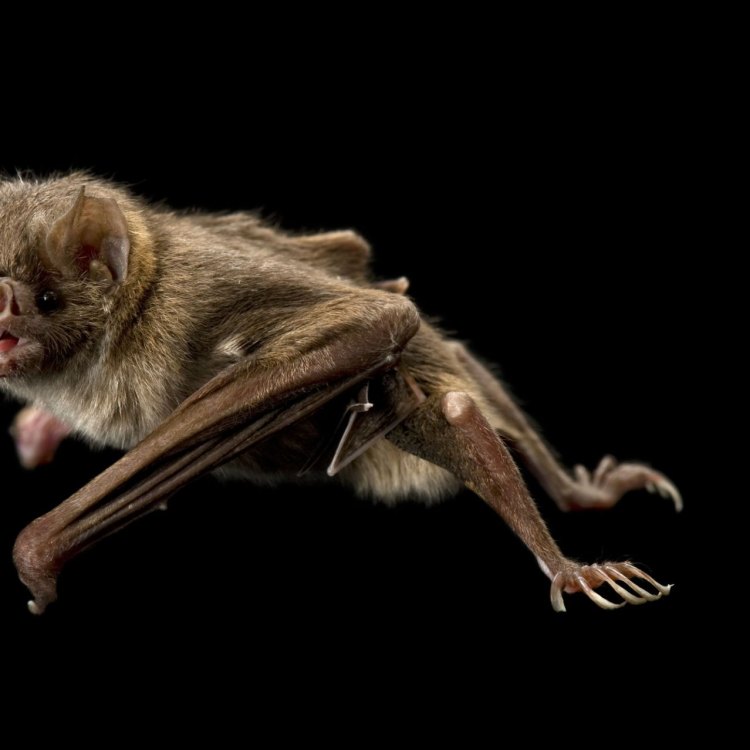
The Mysterious and Misunderstood Vampire Bat
Disclaimer: The content provided is for informational purposes only. We cannot guarantee the accuracy of the information on this page 100%. All information provided here may change without prior notice.


